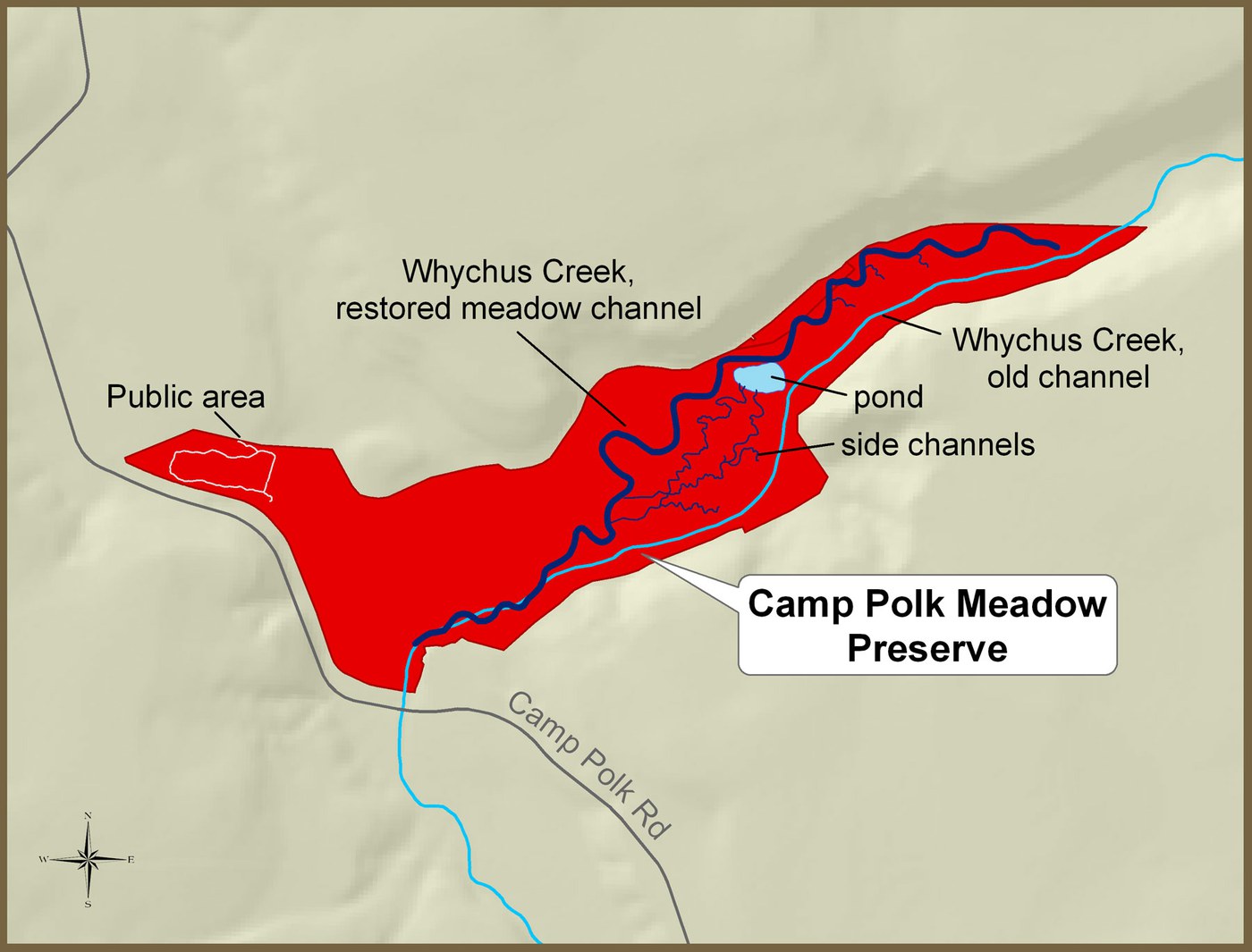In 2012 the Land Trust, in partnership with the Upper Deschutes Watershed Council and Deschutes National Forest, completed a multi-year restoration of Whychus Creek and its surrounding meadow at Camp Polk Meadow Preserve.
Why restore Whychus Creek?
Historically salmon and steelhead made their way to the streams of the upper Deschutes basin to spawn and then rear. With the construction of dams on the lower Deschutes in the 1960's, fish passage to the upper basin was blocked.
Today, the relicensing of these dams has provided an opportunity to restore native fish to their original range. The Land Trust acquired Camp Polk Meadow with the intent to restore the creek for the return of salmon and steelhead. The stretch of Whychus Creek that runs through Camp Polk Meadow can provide some of the highest quality spawning and rearing habitat on Whychus Creek.
Restoration goals
Prior to the restoration, Whychus Creek was restricted to a narrow, straight and fast channel at the south edge of the meadow. The creek was moved to this channel as a result of agricultural and flood mitigation activities. Historically, the creek meandered throughout the meadow.

The goal of the restoration was to restore Whychus Creek and its surrounding meadow to greatly improve fish and wildlife habitat. Dig deeper into restoration goals and details.
The result: Whychus Creek was returned to its original channel meandering through the meadow and reconnected to its historic floodplain. This helped create much better fish habitat and restored more than 70 acres of wetland habitat, benefiting many wildlife species.
Restoration Timeline
- 2009: crews re-constructed a restored channel that followed the historic Whychus Creek path through Camp Polk Meadow. Native plants were installed around the restored channel and were allowed to grow for several years prior to returning Whychus Creek's flow to the channel.
- 2011: crews returned to the meadow to carve side channels and remove access roads and plugs.
- 2012: The full flow of Whychus Creek was redirected into the restored channel. Watch a time lapse video from the historic day! Restoration crews finished the excavation of the restored channel where it connected while volunteers and ODFW biologists transferred the fish from the existing channel to the restored channel. Crews decommissioning the existing channel by filling it with rocks, trees, and soil.
- Post-restoration: The Land Trust and our partners at the Upper Deschutes Watershed Council regularly monitor Camp Polk Meadow Preserve and the restored Whychus Creek. Learn more about post-restoration details.
Who restored Whychus Creek at Camp Polk Meadow Preserve?
The Land Trust partnered with the Upper Deschutes Watershed Council and the Deschutes National Forest on this restoration project. Additionally, a technical advisory team offered specific scientific expertise where needed. Members of this team include representatives from The Nature Conservancy, U.S. Fish & Wildlife Service, Oregon Department of Fish and Wildlife, University of Oregon, Oregon State, and The Confederated Tribes of Warm Springs.


